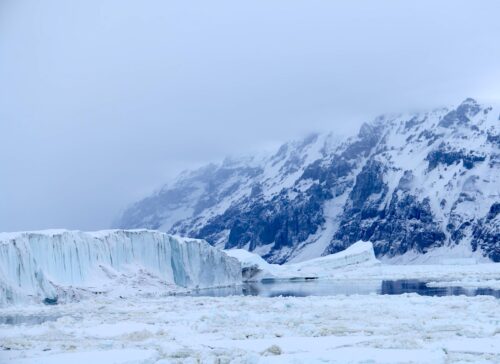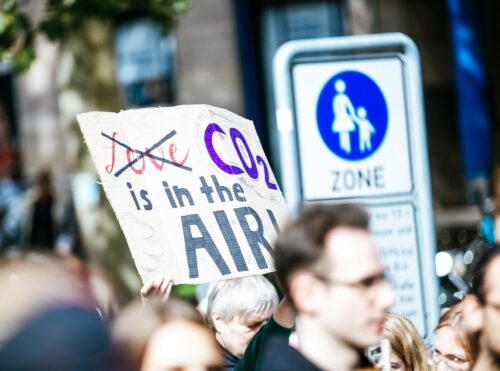 Study after study in top scientific journals finds that nuclear power plants are far and away the safest way to make reliable electricity. Why then are we so afraid of them?
Study after study in top scientific journals finds that nuclear power plants are far and away the safest way to make reliable electricity. Why then are we so afraid of them?
Many believe it’s because of the historic association of nuclear plants with nuclear weapons. But during the first two decades of nuclear power, people were more excited than afraid of it.
In his magisterial new book, Energy: A Human History, the Pulitzer-winning historian, Richard Rhodes, quotes the inventor of the first peaceful nuclear power plant, U.S. Navy Admiral Hyman Rickover, trying to tamp down excess enthusiasm by the public and policymakers.
“I think we have babied a lot of people in this country too long with the glamour of atomic energy,” Rickover told a congressman in 1957.
How did we go from the glamour of nuclear power in the 1950s to the fears that surround the technology today?
The most common answer to this question is that the nuclear accidents at Three Mile Island, Chernobyl and Fukushima frightened people.
And yet the accidents proved the relative safety, not the relative danger, of nuclear energy. Nobody died from radiation at Three Mile Island or Fukushima, and fewer than 50 died from Chernobyl in the 30 years since the accident.
How, then, did everyone come to see those nuclear accidents as so catastrophic?
The answer is because of how governments responded to them. Instead of encouraging the public to stay calm and carry on, governments freaked out and evacuated hundreds of thousands of people.
“Between five and ten times too many people were moved away from the Chernobyl area between 1986 and 1990,” a team of top scientists wrote last week in the peer-reviewed journal, Process Safety and Environmental Protection.
As for the 2011 nuclear accident in Japan, the scientists said they found “it difficult to justify moving anyone away from Fukushima Daiichi on grounds of radiological protection.”
In other words, it was the over-reaction to the accidents — not the accidents themselves — that resulted in popular fears of the technology.
The statement by radiation scientists raises the possibility that, even if we cannot ever fully overcome public fears, we might change how governments respond to the next nuclear accident.
But it also begs the question: why do governments keep overreacting to nuclear accidents in the first place?
To answer that question, we have to go back in time to the birth of nuclear power — and the 50 year-long war against it.
The War on Universal Prosperity
In his 1953 “Atoms for Peace” speech, President Eisenhower proposed using nuclear energy as a way to redeem humankind for having brought such an awful technology into existence. Arms reduction wouldn’t be sufficient. What was the point of peace if billions remained in poverty?
“Experts would be mobilized to apply atomic energy to the needs of agriculture, medicine, and other peaceful activities,” Eisenhower told the United Nations General Assembly in Manhattan, New York. “A special purpose would be to provide abundant electrical energy in the power-starved areas of the world.”
Eisenhower’s vision was at once nationalist and internationalist, altruistic and self-interested.
“The United States pledges to devote its entire heart and mind,” he said, “to find the way by which the miraculous inventiveness of man shall not be dedicated to his death, but consecrated to his life.”
After Eisenhower finished, there was a brief silence and then something extraordinary happened: representatives from every nation rose to their feet and applauded for 10 minutes.
But not everybody was enchanted by the idea of eliminating poverty. Three years before Eisenhower’s speech, a veteran of the Manhattan Project, the U.S. government effort to create the atom bomb, published a book that argued that humans were overpopulating the earth.
Humankind “would not rest content until the earth is covered completely, and to a considerable depth, with a writhing mass of human beings, much as a dead cow is covered with a pulsating mass of maggots,” the scientist Harrison Brown wrote in The Challenge of Man’s Future in 1950.
Brown, notes Rhodes, was hugely influential among environmentalists. One of his proteges was John Holdren, President Barack Obama’s science advisor, who would go on to describe Brown as “warm and witty…and surprisingly modest.” But Brown had also proposed the breeding and sterilization of humans to prevent “the long-range degeneration of the human stock.”
Brown’s proposal, Rhodes explains, was an extension of the ideas of 19th Century economist Thomas Malthus who lusted for the extermination of his fellow man, particularly the poor and the Irish. “Instead of recommending cleanliness to the poor,” Malthus argued, “we should encourage contrary habits…and court the return of the plague.”
In 1966, misanthropic conservationists within the Sierra Club had embraced Malthusianism. Writes Rhodes:
The small-world, zero-population-growth, soft-energy-path faction of the environmental movement that emerge across the 1960s and 1970s knowingly or unknowingly incorporated the antihumanist ideology of the neo-Malthusians into its arguments… “more power plants create more industry,” [the Sierra Club’s executive director complained,] “that in turn invites greater population density.”
Such anti-humanist ideas came full bloom in Stanford biologist Paul Ehrlich’s 1967 Sierra Club pamphlet, The Population Bomb, which depicted poor people in India as animals “screaming…begging…defecating and urinating.”
In sharp contrast, the creators of nuclear power remained optimistic and humanistic. They viewed the new energy source as the key to avoiding the problems created by a growing human population — and allowing everyone, including the poorest of the poor in Africa, to rise from poverty.
With nuclear energy, Oak Ridge Laboratory Director, Alvin Weinberg, argued, humans could create fertilizer, fresh water, and thus abundant food — forever.
But literal-minded nuclear advocates like Weinberg missed the point. The cheap and abundant energy was — for Malthusians — not a feature but rather a bug. The Sierra Club and other environmentalists hated nuclear because it held out the promise of universal prosperity.
It was at that moment that environmental groups and their philanthropic supporters began a half-century-long campaign to frighten the public. “Our campaign stressing the hazards of nuclear power,” wrote Sierra Club’s President in a 1974 memo to the board of directors, “will supply a rationale for increasing regulation and add to the cost of the industry.”
The Scientific Fraud
One of the most shocking passages in Rhodes’ Energy is about how a Nobel Prize-winning American scientist committed scientific fraud to exaggerate the risks of nuclear radiation to human health.
Drawing on archival research by Edward Calabrese, a University of Maryland professor of toxicology, Rhodes describes the work of Hermann Muller, a University of Texas geneticist who won the Nobel Prize in Medicine in 1946.
Muller’s research on fruit flies led him to conclude that there is no safe dose of radiation because every dose, he believed, led to mutations that, Rhodes explains, “were damaging or lethal… irreversible and permanent as well.”
But just before Muller flew to Stockholm to accept his Nobel Prize, he was sent new research that contradicted his conclusions.
Muller’s work, and that of others across the years, had explored the effects of high and medium doses of radiation. [Insect behaviorist Ernst] Caspari had extended that research into the low-dose range and had asked in particular whether the effect would be the same when the dose was spread out over a period of time (“chronic”) rather than delivered all at once (“acute”)…Caspari’s startling new finding was that fruit flies exposed to a [low] daily dose… showed no increase in their mutation rate.
Muller faced a dilemma. “What should he do? What he should have done was qualify his Nobel lecture.” But Muller didn’t. “In Stockholm,” Rhodes writes, “Muller accepted his Nobel Prize and then deliberately ignored Caspari’s findings in his lecture.”
But that wasn’t even the worst of it. On his return to the U.S., Muller reviewed Caspari’s research and told a colleague that he had “little to suggest in regard to the manuscript” beyond recommending the study be replicated.
However, as the main reviewer of the paper, Muller proceeded to oversee its publication — with two changes. “Muller’s name now appeared among the acknowledgments,” notes Rhodes, “and one crucial sentence had been deleted. The deleted sentence was the sentence that questioned Muller’s theory.”
Muller’s status as a powerful scientist and Nobel Prize winner allowed him to establish his falsified theory as the scientific basis for regulating nuclear plants for decades to come.
Having suppressed an evidence-based challenge to his “linear no-threshold” (LNT) model of radiation effects, Nobel laureate Muller thereafter continued to promote and defend the LNT model whenever and wherever the question arose.
Muller’s professional motivations overlapped with the agendas of anti-nuclear scientists and activists. “An antinuclear movement that originated in hostility to population growth in a supposedly Malthusian world,” writes Rhodes, “promoted, in turn, the LNT model, exaggerating its effects.”
The good news is that a growing number of scientists who specialize in radiation, climate, and public health are speaking out for nuclear power plants as critical to saving lives.
In 2013, Rhodes notes, the climate scientists Pushker Kharecha and James Hansen found that “nuclear power prevented an average of 1.84 million air pollution-related deaths.”
And that’s before taking into account the potential consequences of climate change.
Over the last two and half years, climate scientists like Hansen and scholars like Rhodes have joined forces to protect and expand nuclear power plants, from Illinois and New York to South Korea and France.
Now, radiation scientists with the backing of the British and Indian governments are urging governments to stay calm and carry on during nuclear accidents.
Their efforts hold out the hope that, whether or not fears of air pollution and global warming can ever trump fears of nuclear accidents, we might at least stop ourselves from grossly over-reacting to them.
Read more at Forbes Blogs




















Lawrence Solomon wrote the book “The Deniers” . With the help of Canadians McIntyre and McKitrick , they skewered Michael Mann with his hockey shtick. Solomon is with Energy Probe, a no-nukes outfit. He worried that banning coal would lead to new nuclear stations. He’s a strange bedfellow.
At least nuclear power is dependable. It’s not eye pollution visible from miles away, 500 foot-tall Green virtue monstrosities, that only provide intermittent power.
Building more nuclear plants is the ultimate call bull shit card on people disguising their agenda in a cloak of green . All energy sources have risks and consequences however nuclear has a long history of reliability and safe energy production that most of the world would benefit from . Robbing people of this resources ensures greater day to day pollution and use of finite resources .
Eliminating nuclear use will however get green pretenders and fossil fuel companies on the same page . I guess we just have to wait till most of the fossil fuels are used up
before governments will be clamoring to build nuclear plants .
The article stated that nuclear power is the safest power, but didn’t state why. This comes from the ratio of construction accident to power produced. Building nuclear plants, hydroelectric dams, or windmills has some people killed in construction accidents. What makes nuclear power so safe is there is so much energy produced for the number of construction deaths.
Do remember that there is a movement to force de-industrialization. In the 1970’s it appeared we were running out of fossil fuels. Nuclear power was the answer. If the activists prevent nuclear power from becoming common, then energy would be scarce and expense forcing de-industrialization.
Well after such as Three Mile Island(TMI)and Chernobel and Hanoi Jane’s putrid movie The China Syndrome and the idiots from The Clam Shell Alliance and Greenpeace and the No Nukes nit-wits in their sandel’s and Hollyweed dope and booze fools